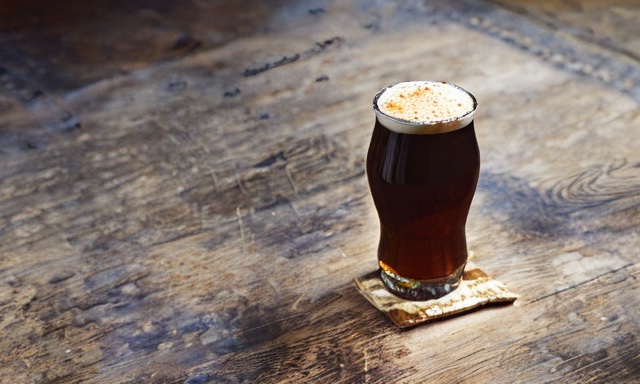If someone asked you to describe the flavor of root beer soda, what would you say? We’re betting you might struggle to find an answer–or that your answer might vary greatly from your peers. There’s a good reason for that.
Root beer sports an elusive profile that has had consumers around the world scratching their heads for generations. The truth is that there’s no truly authentic root beer recipe and, in fact, recipes differ between brands as well as around the globe.
Get to the root of root beer with us as we explore the origins of this classic drink, how it evolved into a beloved soda, and why it continues to change what the world is drinking.

The First Commercial Root Beer
Most people don’t spend their honeymoon seeking out inspiration for their next entrepreneurial venture, but we’re assuming Charles Hires wasn’t most people. In fact, you can thank Hires for contributing to the widespread popularity of root beer we enjoy today.
It all starts in 1875. While on his honeymoon, Hires discovered and developed a taste for an herbal “root tea,” taking the recipe home with him to Philadelphia. There, he tinkered with the recipe and became the first to market root beer as a commercial product.
The packaged dry blend contained 16 ingredients and was introduced to the Philadelphia Centennial Exhibition in 1876. One package of his product cost 25 cents and could create five gallons of the finished drink. Consumers loved it.
Encouraged by the enthusiastic response, Hires soon re-formulated his dry blend into a liquid concentrate of the drink, which included nearly 30 different herbs, berries, and roots. By 1893, he had established a successful business in selling bottles of his famous brew.

Seeing an opportunity, other brands would later emerge and market similar products of their own. Barq’s launched in 1898, followed by followed by A&W in 1919. Dad’s Old Fashioned made its debut in the late 1930s, becoming the first product to utilize the standard six-pack packaging format we enjoy for most beverage products today. Originally marketed as “Belfast Root Beer,” Mug was then created during the 1940s.
Today, these four brands remain the most widely distributed root beer products globally, with A&W dominating as the number one in root beer sales worldwide.
Root Beer, Every Way!
We know what you’re thinking–what’s the deal with all of these root beer brands? While brands like Coca-Cola and Pepsi dominate the cola market, root beer doesn’t seem to have any one clear winner–at least in so far as consumer tastes are concerned.
Sure, we can see that A&W brings in the most sales for the category, but debates surrounding which root beer brand reigns supreme in flavor usually tend to skew towards the complicated–much more so than the question of “coke or pepsi.”
While root beer has developed a few accepted characteristics–it’s bubbly, brown, sweet, and non-alcoholic–that’s where the similarities stop. Just like the homebrews of the early days of “root tea” and small beers, root beer today continues to be a diverse beverage category with a profile that can be hard to describe.
Medium has attempted to sort through the web of flavors, grouping popular root beer brands by their core profile. “Sharpy pungent” styles of root beer are spicier, sometimes even more bitter or astringent. Brands like Barq’s and Dads Old Fashioned appear in this category, plus the Australian brand Bundaberg. Medium’s head-scratching “sweet and creamy” and “smooth and creamy” groupings present two additional categories for the soda, with subtle differences that again speak to the challenge of nailing down a classic root beer profile.
Our Chief Flavorist, Tom Gibson, has his own take on what constitutes a root beer, then and now:
Modern beverage manufacturers continue to utilize some of these components along with a combination of flavorings, sweeteners, carbonation, and caffeine, but there continues to be no single way of making a great root beer product–that’s an exciting prospect for beverage creators.
When you’re ready to talk about your idea for the world’s next root beer soda, give us a call at (502) 273-5214 or get started with this web form.

Extracting Safrole to Make Government-Banned Root Beer
What are the different types of root beers?
According to Difford’s Guide, today’s root beers might include flavors like vanilla, wintergreen, cherry tree bark, licorice, sarsaparilla, nutmeg, anise, ginger, and dandelion, all combined to various degrees with the goal of making the taste pop. Brands like A&W, Barqs, Dad’s, and IBC are among some of the most popular, reports Barstool Sports .
What is root beer made of?
Root beer is a sweet North American soft drink traditionally made using the root bark of the sassafras tree Sassafras albidum or the vine of Smilax ornata (known as sarsaparilla, also used to make a soft drink, sarsaparilla) as the primary flavor. Root beer is typically, but not exclusively, non-alcoholic, caffeine -free, sweet, and carbonated.
What is a root beer flavored with?
Most root beers produced today are flavored primarily with a combination of vanilla and wintergreen, along with small amounts of ginger, licorice, anise, juniper berries, and dandelion, explains Portable Press. To this list of flavorings, BlackTailNYC adds cherry tree bark and nutmeg.
Is root beer alcoholic?
Generally, commercially produced root beers are non-alcoholic. However, historically, some varieties of root beer did contain a small amount of alcohol due to the fermentation process. Can root beer expire? Like any consumable item, root beer can spoil if not stored properly.
